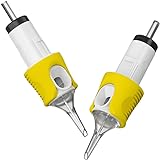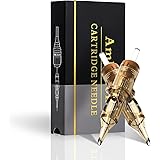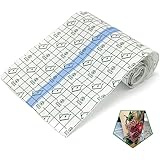The intricate dance of a pen across paper, the careful formation of each curve and line, often holds a captivating allure. For many, the simple act of creating beautiful letters can be both a meditative practice and a profound artistic expression. The video above offers a glimpse into this mesmerising world, showcasing the delicate precision and creative flair involved in crafting stunning lettering art. It highlights how a seemingly simple task can be transformed into something truly enchanting, demonstrating the rhythmic flow that is central to this craft.
Unpacking the Art of Lettering
Before diving into the mechanics, it is important to grasp what hand lettering truly encompasses. Often, the terms “hand lettering,” “calligraphy,” and “typography” are used interchangeably, yet subtle distinctions exist, each pointing to a unique facet of the art of beautiful script.
Hand Lettering vs. Calligraphy: A Subtle Distinction
When observing the artistry in the accompanying video, the fine details and deliberate design of each letter become apparent. Generally, hand lettering is understood as the art of drawing letters, where each character is essentially an illustration. It’s about constructing letters with intention, focusing on the overall composition and aesthetic appeal. Think of it as an artist carefully designing a unique logo, where every element is meticulously placed.
Conversely, calligraphy is typically defined as the art of writing letters. It involves a more fluid, rhythmic motion, where tools like dip pens or brush pens are used to create elegant letterforms through consistent strokes and pressure variations. Here, the emphasis is placed on the precise execution of traditional letter styles, with a focus on consistency and historical forms. Therefore, while both disciplines celebrate the beauty of the written word, hand lettering allows for greater freedom in design, whereas calligraphy often adheres to established techniques and scripts.
Why the Fascination with Lettering Art?
The appeal of hand lettering is multifaceted. For some, it is the therapeutic process of focusing on minute details, a mindful escape from the digital world. The tactile sensation of pen on paper, the visible progress of a design taking shape, provides a deep sense of satisfaction. Moreover, beautifully crafted letters possess an inherent ability to convey emotion and personality in a way that standard fonts often cannot. It is this human touch, this unique signature, that elevates a simple message into a piece of art.
However, beyond the visual result, the journey of learning and perfecting hand lettering is where true growth is often experienced. It requires patience, attention to detail, and a willingness to embrace the process of continuous improvement. The visual inspiration provided by artists like those in the video can ignite a spark, prompting individuals to embark on their own creative explorations, seeking to capture that same magic in their own work.
Essential Tools for Your Lettering Journey
Just as a chef relies on a specific set of knives, a lettering artist requires a curated collection of tools to bring their visions to life. The right implements can significantly impact the ease of practice and the quality of the final outcome. Fortunately, getting started in hand lettering does not necessitate an extensive or expensive array of supplies; a few key items can open up a world of creative possibilities.
Starting with the Basics: Paper and Pencils
Every great lettering piece begins with a solid foundation, which is often a preliminary sketch. A smooth, bleed-resistant paper is ideal, allowing pens to glide effortlessly without feathering. Marker paper or Bristol paper are excellent choices, offering a surface that is gentle on pen tips while preventing ink from seeping through. For initial sketches, a light pencil (such as a 2H or H) is preferred, as its lines are easily erased without leaving indentations or smudges. These foundational tools are where ideas are first laid out, and compositions are meticulously planned.
Exploring Markers and Brush Pens
Once the sketch is complete, the magic of inking begins. Brush pens are a staple in the hand lettering community, recognised for their versatility in creating both thick and thin lines. These pens often come with flexible felt or nylon tips that respond to pressure: light pressure yields thin upstrokes, while heavier pressure produces broad downstrokes. This dynamic contrast is fundamental to achieving elegant lettering styles. Different brands offer varying levels of tip flexibility and ink types, from water-based markers that allow for blending to alcohol-based markers that offer vibrant, consistent colour. Experimentation with various brands and tip sizes is highly recommended, as personal preference plays a significant role in finding the perfect brush pen.
However, while these tools offer incredible versatility, they also demand a certain finesse to master. Controlling the pressure and angle of the brush tip takes practice, but the rewards are beautifully fluid lines that resemble traditional brushwork. Exploring these instruments is a crucial step in developing a unique hand lettering style.
The World of Traditional Calligraphy Pens and Inks
For those looking to delve deeper into the classical roots of letterforms, traditional calligraphy pens and inks are invaluable. Dip pens, consisting of a holder and interchangeable metal nibs, offer an unparalleled range of line variations and textures. Each nib, whether pointed or broad-edged, creates distinct letterforms, allowing for the exploration of historical scripts like Copperplate, Spencerian, or Gothic. The process of dipping the nib into an inkwell, managing the flow of ink, and carefully guiding the pen across the paper is a deeply meditative experience, connecting the artist to centuries of calligraphic tradition. While these tools might present a steeper learning curve, the richness and elegance they impart to lettering art are truly unmatched.
Fundamental Techniques: Building Blocks of Beautiful Letters
Observing skilled artists, as shown in the video, one might be struck by the apparent effortlessness of their strokes. Yet, this fluidity is the result of diligently practiced fundamental techniques, which are the bedrock of any successful hand lettering or calligraphy project. Understanding and mastering these basic elements is paramount before more complex designs can be attempted.
Mastering the Basic Strokes
The foundation of beautiful lettering lies in mastering a few core strokes. These are typically divided into thin upstrokes and thick downstrokes. When the pen moves upwards, minimal pressure is applied, resulting in a fine, delicate line. Conversely, as the pen moves downwards, increased pressure is exerted, creating a broader, more impactful stroke. Consistency in these strokes is developed through focused repetition, much like a musician practicing scales to build dexterity. Drills involving straight lines, ovals, and spirals, all executed with controlled pressure changes, help to build muscle memory and improve coordination. This distinction between thick and thin lines is what gives hand lettering its characteristic elegance and rhythm.
The Importance of Practice Drills
Mere repetition, however, is not enough; thoughtful practice is key. Regular drills are vital for improving consistency and control. These aren’t just about mindlessly drawing lines; they are about intentional practice, focusing on angle, pressure, and fluidity. Setting aside dedicated time each day, even just 15-20 minutes, can yield significant improvements. Practice sheets with guidelines can be immensely helpful in maintaining uniformity in size, slant, and spacing. Just as an athlete trains to perfect their form, a lettering artist refines their hand movements through disciplined drills, making the process almost second nature.
Understanding Letter Anatomy and Spacing
Beyond individual strokes, the overall visual harmony of words is dictated by an understanding of letter anatomy and proper spacing. Concepts such as the baseline (the line on which letters sit), the x-height (the height of lowercase letters without ascenders or descenders), ascenders (parts of letters that extend above the x-height, like ‘h’ or ‘l’), and descenders (parts that extend below the baseline, like ‘g’ or ‘p’) are crucial. Furthermore, consistent spacing between letters (kerning) and between words ensures readability and aesthetic balance. When letters are too close or too far apart, the composition can appear disjointed. Learning to see and adjust these elements is what transforms individual beautiful letters into cohesive and impactful lettering art.
Cultivating Your Unique Lettering Style
While the video showcases a particular aesthetic, the ultimate goal for many lettering artists is to develop a style that is uniquely their own. This process is less about replication and more about exploration, synthesis, and self-expression. It’s about taking inspiration from various sources and filtering it through one’s personal creative lens.
Drawing Inspiration from Everywhere
To cultivate a distinctive style, artists are encouraged to look beyond the immediate realm of lettering. Inspiration can be found in the most unexpected places: the intricate patterns of nature, the architectural lines of a cityscape, the historical scripts found in old manuscripts, or even the typography on product packaging. Collecting these visual ideas—whether through sketches, photographs, or digital mood boards—helps to build a personal library of forms and concepts. While emulating others can be a good starting point, the ultimate aim is often to transcend imitation, using these influences as a springboard for original ideas rather than direct copies.
Experimentation and Play
The journey to a unique style is often paved with experimentation. This means daring to deviate from established rules, trying new tools, mixing different colours, or playing with unconventional layouts. What happens if a different type of ink is used on textured paper? How does a letter change if its loops are exaggerated or minimised? Such playful exploration, much like a chef experimenting with new ingredients, can lead to unexpected and delightful discoveries. New techniques and aesthetic breakthroughs are often made when boundaries are pushed, allowing for a fresh perspective on familiar forms. This open-minded approach helps in breaking free from creative blocks and fostering innovation within one’s hand lettering practice.
Embracing Imperfection as Part of the Process
Perhaps one of the most liberating aspects of developing a personal style is learning to embrace imperfection. Not every letter will be flawless, and not every design will be an instant success. These ‘mistakes’ are not failures; rather, they are invaluable learning opportunities. Growth is fostered when challenges are viewed as stepping stones, providing insight into what works and what doesn’t. The journey of hand lettering is iterative; it involves constant refinement and a willingness to accept that progress, not perfection, is the true measure of success. It is in this acceptance that an artist’s unique voice truly begins to emerge, transforming their lettering into something authentic and personal.
Actionable Tips for Aspiring Lettering Artists
Embarking on the hand lettering journey, as beautifully demonstrated in the video, is a rewarding endeavour. For those inspired to begin or continue their path, a few actionable steps can significantly enhance the learning experience and foster growth.
Set Up a Dedicated Practice Space
Having a specific area, however small, dedicated to your lettering practice can make a significant difference. This space should be well-lit and organised, allowing easy access to your tools. A consistent environment helps in establishing a routine and signals to your mind that it’s time to focus on creative work. The act of settling into this space can become a ritual, making it easier to start your practice sessions regularly.
Engage with the Lettering Community
The hand lettering community, both online and offline, is vibrant and supportive. Engaging with other artists through social media, local workshops, or online forums can provide immense encouragement and learning opportunities. Sharing your work, receiving constructive feedback, and seeing the diverse approaches of others can accelerate your development and broaden your creative horizons. Inspiration is often found in the shared experiences and advice of fellow enthusiasts.
Document Your Progress
Keeping a sketchbook or a digital portfolio of your hand lettering work is incredibly beneficial. Regularly looking back at earlier pieces allows you to visibly track your improvement, which can be a powerful motivator. Documenting your creative journey, from initial rough sketches to more refined pieces, also provides a tangible record of your evolving style and techniques. This historical perspective reinforces the understanding that every stroke, every practice session, contributes to the larger mosaic of your artistic development in hand lettering.











